 Translated by:
Translated by:
Bylienė, Regina
Translated from:
(Lietuvių) kinų
Published on:
2016
„Royal tiger fur cape“ is an old Chinese folktale which was written by Jian Ling Ling and Wang Jing Yang. Regina Bylienė translated it to Lithuanian. The book is written in two languages, Chinese – Lithuanian and because of that it is a great language learning tool. Also the drawings are worth my mention. Unfortunately, the book is not available in English yet.
Plot of the story is quite simple and the Chinese folk is everywhere. There was a poor family and mother gave a birth to a kid who grew up bigger than his father in half a day. The kid, who was named Kunan understood that his family won‘t be able to take care of him, so he decided to leave home. Kunan met khan and he gave kid a quest – to bring back him a dead royal tiger. Khan was obsessed with the idea of having a cape made of royal tiger fur. More
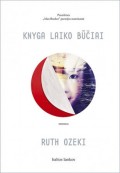 Authors:
Authors:
Ozeki, Ruth
Translated by:
Chijenienė, Nijolė Regina
Translated from:
English
Published on:
2016
More
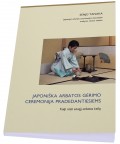 Authors:
Authors:
Tanaka, Senyū
Translated by:
Barancovaitė-Skindaravičienė, Kristina
Translated from:
Japanese
Published on:
2016
In this book you will find easy to follow The Japanese tea ceremony also called the Way of Tea , which you can perform both at home and in a special place called the Tea room. Clearly written links to every move will help you easily understand tea ceremony’s meaning, artistic value and make your meeting with friends different.
In the first chapter of this book, you will be introduced to the Way of Tea and main used dishes, later on you will be able to learn about etiquette and secrets of this ceremony. So first of all, when you will start this book you will be introduced to The Japnanese tea ceremony and just then, when later in the book you will start to learn about the real Way of Tea. More
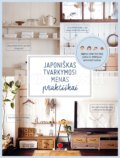 Authors:
Authors:
Shufu To Seikatsu Sha
Translated by:
Geležauskas, Andrius
Translated from:
Japanese
Published on:
2016
The book describes houses of eight tidying up experts whose home are different size and number of family members. Each expert has come up with their own techniques that help to maintain a clean environment, save space and find things easily. The book has plenty of advice on how many things need to be stored, what interior parts you should buy and how to install stylish rooms. This art of tidying up reflects a harmonious environment that helps a person to relax and feel joy. More
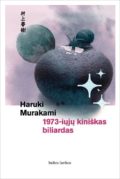 Authors:
Authors:
Murakami, Haruki
Translated by:
Čepulionytė, Gabija
Translated from:
Japanese
Published on:
2016
Haruki Murakami (1949 01 12) – the writer whose creations became bestsellers not only in Japan but in the whole world. His books were translated in 50 languages, and over 1mln copies were sold. The master of mysteries gained lots of prestige prizes and nominations.
H. Murakami wrote “Pinball, 1973” as his first More
 Authors:
Authors:
Tan, Amy
Translated by:
Karsokienė, Aušra
Translated from:
English
Published on:
2015
Spanning fifty years and two continents, The Valley of Amazement is a tale of three women, connected by personal rebellion, betrayal, and a mysterious painting called “The Valley of Amazement.” The story opens in 1905, in a first-class courtesan house in Shanghai, Hidden Jade Path, run by Lucia, a willful and wild American woman who was once herself the proprietress of Shanghai’s most exclusive courtesan house, nurses her own secret wounds, which she first sustained when, as a teenager, she fell in love with a Chinese painter and followed him from San Francisco to Shanghai.Her search for penance and redemption will bring her to a startling reunion with Flora, Violet\’s daughter, and will shatter all that Violet believed she knew about her mother. More
 Authors:
Authors:
Yoshimoto, Banana
Translated by:
Baronina, Indrė
Translated from:
Japanese
Published on:
2015
Banana Yoshimoto (born 1964) is a Japanese author, best known for her debut novel “Kitchen”. Her writing often deals with young people striving to survive in the modern world and trying not to lose themselves after going through painful or even traumatic experiences. However, the dark subject material does not overshadow warm and somewhat joyful tone of Yoshimoto’s stories, a feature that gives quite an interesting atmosphere to her works.
More
 Authors:
Authors:
Kiew Kit, Wong
Translated by:
Kuzas, Rimvydas
Translated from:
English
Published on:
2015
“Qigun” – it is Wong Kiew Kit book about vital energy, how to improve health, develop internal power and train your mind. Energy in Chinese language is called chi. Chi – is energy, which allows us to walk, to speak, to work, to imagine and a lot of other actions. Of course, we get chi from air or food, not only from cigun practice, but with practice we can get more energy. Cigun is experimental, not only intellectual discipline. It is not enough to read and understand what is cigun, but if … More
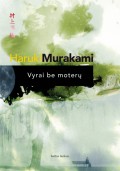 Authors:
Authors:
Murakami, Haruki
Translated by:
Čepulionytė, Gabija
Translated from:
Japanese
Published on:
2015
Haruki Murakami is a japanese writer, born in 1949 on January 12th. He was raised in Kiyoto but currently lives in Tokyo. According to the majority H.Murakami is contraversial and has a Western outlook. In his homeland he is criticized for abandoning the typical style and some of the Western countries believe that he is being toady towards them. Disregarding that, no one can deny that Haruki Murakami is one of the greatest writers that are still alive and his work is constanly in the bestseller list. One of his most recent books “Men without women” is a six-story collection which is about men that are parted from or left by their women. Protagonists suffer from loss in every single novelle. More
 Authors:
Authors:
Ishihara, Yumi
Translated by:
Palmira, Martinkienė
Translated from:
Russian
Published on:
2015
“Oriental way to recovery” – is a book, the title of which we can understand that there will be talking about the Eastern way of life. But the Journal mostly highlights medicine – the use of drugs, diet, various exercises, even the oriental philosophy. All of this author defines as “a way to live.” The question remains: „why is it oriental?“. Ishihara Yumi’s book attempts to reveal the differences between oriental medicine from the West, what people can change in order to achieve such More
 Translated by:
Bylienė, Regina
Translated by:
Bylienė, Regina 
 Authors:
Ozeki, Ruth
Authors:
Ozeki, Ruth  Authors:
Tanaka, Senyū
Authors:
Tanaka, Senyū  Authors:
Shufu To Seikatsu Sha
Authors:
Shufu To Seikatsu Sha  Authors:
Murakami, Haruki
Authors:
Murakami, Haruki  Authors:
Tan, Amy
Authors:
Tan, Amy  Authors:
Yoshimoto, Banana
Authors:
Yoshimoto, Banana  Authors:
Kiew Kit, Wong
Authors:
Kiew Kit, Wong  Authors:
Murakami, Haruki
Authors:
Murakami, Haruki  Authors:
Ishihara, Yumi
Authors:
Ishihara, Yumi